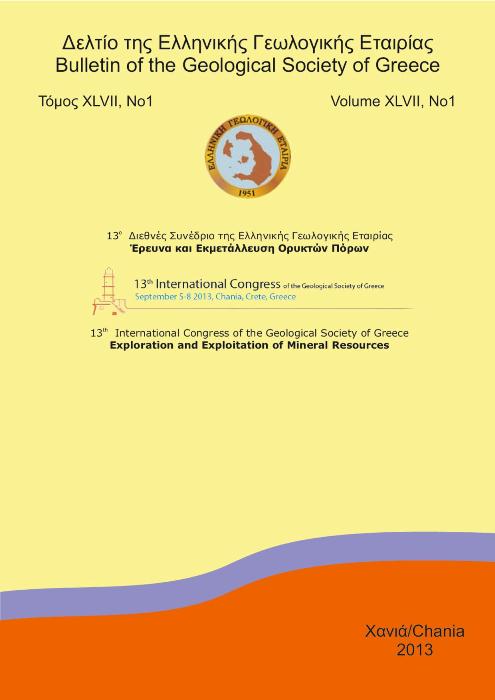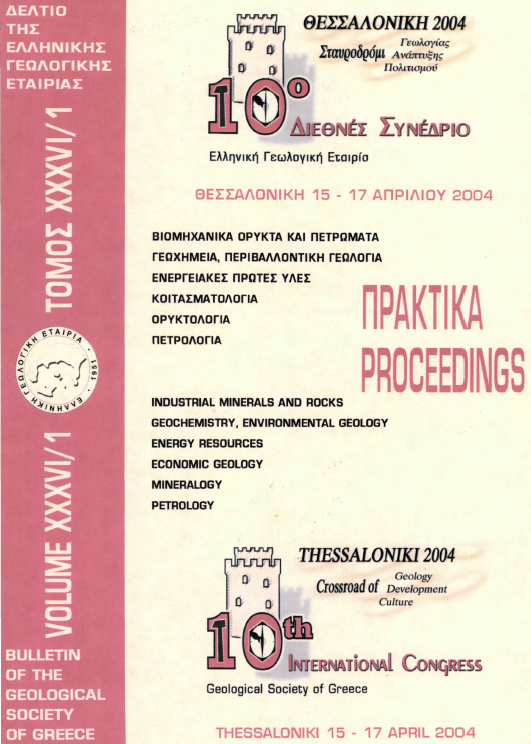REGIONAL CORRELATION AND CYCLOSTRATIGRAPHY IN THE MID-CRETACEOUS FORMATIONS OF THE IONIAN ZONE

Περίληψη
Η περίοδος του Μέσου Κρητιδικού χαρακτηρίζεται από εκτεταμένη απόθεση οριζόντων πλούσιων σε οργανικό άνθρακα, καταγράφοντας ωκεάνια ανοξικά επεισόδια (OAEs), τα οποία αντιστοιχούν σε περιόδους μεγάλων διαταραχών του κύκλου του άνθρακα. Οι αιτίες αυτών των επεισοδίων αποτελούν ακόμη αντικείμενο υποθέσεων. Στη μελέτη αυτή εξετάζεται ο ρόλος των μεταβολών των τροχιακών παραμέτρων στην απόθεση των μαύρων αργίλων της Ιόνιας ζώνης (Δυτική Ελλάδα), μιας περιοχής που είναι ήδη γνωστή για καταγραφές OAEs. Τα κυκλοστρωματογραφικά δεδομένα για το διάστημα του Κατώτερου Απτιου ερμηνεύονται σε ένα πλαίσιο κλιματικών αλλαγών και γίνονται υποθέσεις για τους ειδικούς μηχανισμούς απόθεσης των πλούσιων σε οργανικό υλικό οριζόντων. Οι παρατηρήσεις υπαίθρου και οι αναλύσεις των σταθερών ισοτόπων και του ολικού οργανικού άνθρακα, καθώς και τα βιοστρωματογραφικά στοιχεία επιτρέπουν το συσχετισμό μεταξύ της τομής Γκότζικα και της τομής Παλιάμπελλα, επίσης στην Ιόνια ζώνη (Ηπειρος, Ελλάδα). Επιπλέον, η τομή Γκότζικας συσχετίζεται με τη συνθετική ακολουθία Poggio le Guaine - Fiume Bosso της περιοχής Umbria - Marche (Ιταλία). Η ιζηματογένεση του Κατώτερου Άπτιου της Ιόνιας λεκάvης φαίνεται να ελέγχεται από τις μεταβολές των τροχιακών παραμέτρων της Γης. Η περιοδικότητα της σύντομης εκκεντρότητας και της λοξότητας καταγράφονται περισσότερο καθαρά. Ενώ η παρουσία σύνθετης κυκλικότητας δείχνει δευτερεύοντα έλεγχο από τις περιοδικότητες της βραδείας εκκεντρότητας και της μετάπτωσης.
Λεπτομέρειες άρθρου
- Πώς να δημιουργήσετε Αναφορές
-
Karakitsios, V., & Agiadi-Katsiaouni, K. (2007). REGIONAL CORRELATION AND CYCLOSTRATIGRAPHY IN THE MID-CRETACEOUS FORMATIONS OF THE IONIAN ZONE. Δελτίο της Ελληνικής Γεωλογικής Εταιρείας, 40(1), 85–100. https://doi.org/10.12681/bgsg.16338
- Ενότητα
- Παλαιοντολογία, Στρωματογραφία και Ιζηματολογία

Αυτή η εργασία είναι αδειοδοτημένη υπό το CC Αναφορά Δημιουργού – Μη Εμπορική Χρήση 4.0.
Οι συγγραφείς θα πρέπει να είναι σύμφωνοι με τα παρακάτω: Οι συγγραφείς των άρθρων που δημοσιεύονται στο περιοδικό διατηρούν τα δικαιώματα πνευματικής ιδιοκτησίας επί των άρθρων τους, δίνοντας στο περιοδικό το δικαίωμα της πρώτης δημοσίευσης. Άρθρα που δημοσιεύονται στο περιοδικό διατίθενται με άδεια Creative Commons 4.0 Non Commercial και σύμφωνα με την οποία μπορούν να χρησιμοποιούνται ελεύθερα, με αναφορά στο/στη συγγραφέα και στην πρώτη δημοσίευση για μη κερδοσκοπικούς σκοπούς. Οι συγγραφείς μπορούν να: Μοιραστούν — αντιγράψουν και αναδιανέμουν το υλικό με κάθε μέσο και τρόπο, Προσαρμόσουν — αναμείξουν, τροποποιήσουν και δημιουργήσουν πάνω στο υλικό.







